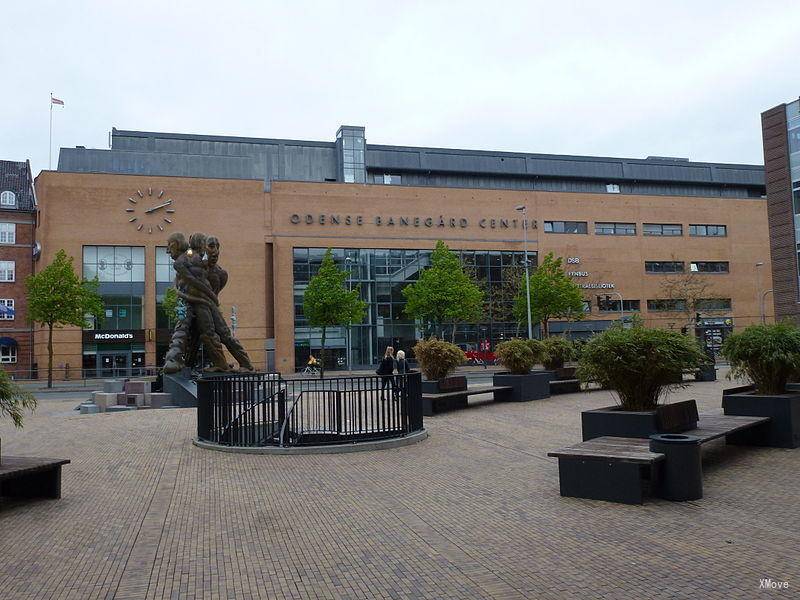Odense St to Prague: Trains, Buses, Fares, Today's Connections, Routes, Duration, Types of Trains, Station Guides, Tips, Journey
Denmark Train Tickets
Train schedule Odense St to Prague(Praha)
Popular train routes departing from Odense St
* Emden Hbf
* Husum(S) Station(Husum Station)
* Gronau(Westf)
* Heidelberg Central(Heidelberg Hbf)
* Budapest Central(Budapest Keleti Pályaudva)
* Koeln Hbf(Köln Hbf)
* Weeze
Popular train routes arriving in Odense St
* Wuppertal Central(Wuppertal Hbf)
* Luebeck Hbf(Lübeck Hbf)
* Köbenhavn H
* Aarhus
* Svendborg St
* Poznan Gl.
* Rendsburg
Popular train routes departing from Prague(Praha)
* Karlovy Vary
* Utrecht Centraal
* Cesky Krumlov(česka Krumlov)
* Vienna Erdberg (U3)(Wien Erdberg (U3))
* Karlovy Vary
* Zürich Hb
* Muenchen Hbf(München Hbf)
Popular train routes arriving in Prague(Praha)
* Minsk
* ப்ர்னோ Hl.N.(Brno Hl.N.)
* நியூரம்பெர்க் பிரதான நிலையம்(Nürnberg Hbf)
* நியூரம்பெர்க்(Nürnberg)
* உட்ரெக்ட் சென்ட்ரல்(Utrecht Centraal)
* முனிச் மத்திய நிலையம்(München Hbf)
* பிளவு(Split)

Odense (, also US: , Danish: [ˈoðˀn̩sə] ) is the third-largest city in Denmark. It has a population of 178,210 as of January 2016, and is the main city of the island of Funen. By road, Odense is located 45 kilometres (28 mi) north of Svendborg, 144 kilometres (89 mi) to the south of Aarhus and 167 kilometres (104 mi) to the southwest of Copenhagen. The city is the seat of Odense Municipality and was the seat of Odense County until 1970, and Funen County from 1970 until 1 January 2007, when Funen County became part of the Region of Southern Denmark. Odense has close associations with Hans Christian Andersen who is remembered above all for his fairy tales. He was born in the city in 1805 and spent his childhood years there. There has been human settlement in the Odense area for over 4,000 years, although the name was not mentioned in writing until 988, and by 1070, it had already grown into a thriving city. Canute IV of Denmark, generally considered to be the last Viking king, was murdered by unruly peasants in Odense's St Alban's Priory on 10 July 1086. Although the city was burned in 1249 following a royal rivalry, it quickly recovered and flourished as a centre of commerce in the Middle Ages. After a period of decline, large-scale plans for development were made during the 18th century, which led to the rebuilding of Odense Palace and the building of a canal to the Port of Odense, facilitating trade. In 1865, one of the largest railway terminals in Denmark was built, further increasing the population and commerce, and by 1900, Odense had reached a population of 35,000. Odense's Odinstårnet was one of the tallest towers in Europe when built in 1935 but was destroyed by the Nazis during World War II. The University of Southern Denmark was established in 1966. In the present day, Odense remains the commercial hub of Funen, and has a notable shopping district with a diversity of stores. Several major industries are located in the city including the Albani Brewery and GASA, Denmark's major dealer in vegetables, fruits and flowers. The city is home to Odense Palace, erected by King Frederik IV who died there in 1730, the Odense Theatre, the Odense Symphony Orchestra, and the Hans Christian Andersen Museum, situated in the house that was the birthplace of Hans Christian Andersen. In sports, Odense has a number of football clubs including OB, BM, B1909, and B1913, the Odense Bulldogs professional ice hockey team, and the city also hosts the H.C. Andersen Marathon. Odense is served by Hans Christian Andersen Airport and Odense station, which lies on the line between Copenhagen and the Jutland peninsula.
Odense - Guide, Attractions, Tours, Sightseeings | Train from/to Odense | Popular RoutesPrague (; Czech: Praha [ˈpraɦa] , German: Prag, Latin: Praga) is the capital and largest city in the Czech Republic, the 14th largest city in the European Union and the historical capital of Bohemia. Situated on the Vltava river, Prague is home to about 1.3 million people, while its metropolitan area is estimated to have a population of 2.6 million. The city has a temperate oceanic climate, with relatively warm summers and chilly winters. Prague is a political, cultural and economic centre of central Europe complete with a rich history. Founded during the Romanesque and flourishing by the Gothic, Renaissance and Baroque eras, Prague was the capital of the Kingdom of Bohemia and the main residence of several Holy Roman Emperors, most notably of Charles IV (r. 1346–1378). It was an important city to the Habsburg Monarchy and its Austro-Hungarian Empire. The city played major roles in the Bohemian and Protestant Reformation, the Thirty Years' War and in 20th-century history as the capital of Czechoslovakia between the World Wars and the post-war Communist era.Prague is home to a number of well-known cultural attractions, many of which survived the violence and destruction of 20th-century Europe. Main attractions include Prague Castle, Charles Bridge, Old Town Square with the Prague astronomical clock, the Jewish Quarter, Petřín hill and Vyšehrad. Since 1992, the extensive historic centre of Prague has been included in the UNESCO list of World Heritage Sites. The city has more than ten major museums, along with numerous theatres, galleries, cinemas and other historical exhibits. An extensive modern public transportation system connects the city. It is home to a wide range of public and private schools, including Charles University in Prague, the oldest university in Central Europe.Prague is classified as an "Alpha −" global city according to GaWC studies and ranked sixth in the Tripadvisor world list of best destinations in 2016. In 2019, the city was ranked as 69th most liveable city in the world. Its rich history makes it a popular tourist destination and as of 2017, the city receives more than 8.5 million international visitors annually. In 2017 Prague was listed as the fifth most visited European city after London, Paris, Rome and Istanbul.
Prague - Guide, Attractions, Tours, Sightseeings | Train from/to Prague | Popular Routes
Denmark Train Tickets
Hot Journeys
* Paris -> Frankfurt
* Milan -> Florence
* Rome(Roma) -> Florence
* Arth -> Milan
* Frankfurt Airport(Frankfurt Flughafen) -> Cologne(Köln)
* Frankfurt -> Berlin(Berlin)
* Lucerne(Luzern) -> Interlaken
* Munich(Müchen) -> Berlin(Berlin)
* Stuttgart -> Frankfurt Airport(Frankfurt Flughafen)





